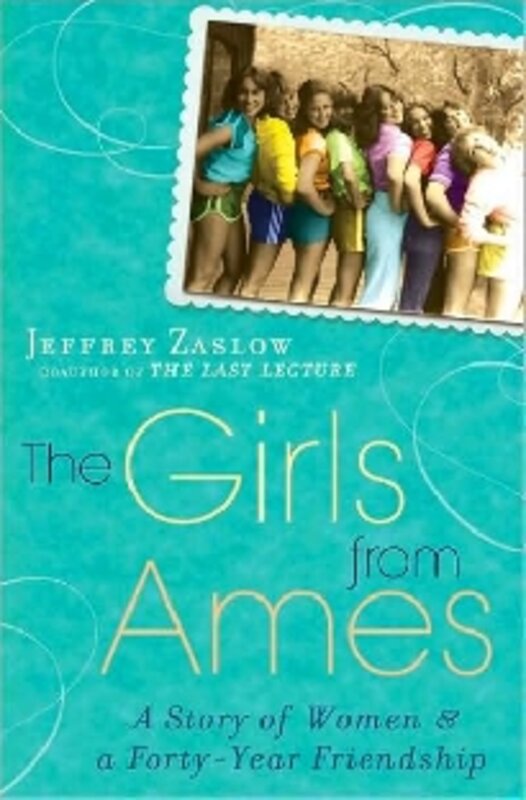The Girls from Ames
Loading...
Jeffrey Zaslow knew he had stumbled on a hot topic when he wrote a column about women’s friendships for The Wall Street Journal. Almost immediately, hundreds of e-mails began pouring in from women eager to share stories about their own longtime friends.
One respondent, Jenny Litchman, described the extraordinary 40-year bond she has shared with 10 girls since they were children in Ames, Iowa. So intriguing was her three-paragraph message that Zaslow eventually took a year’s leave of absence to chronicle their story.
His book, The Girls From Ames, stands as a moving testament to the power and importance of female relationships. Now in their mid-40s, these women exemplify universal truths about friendship, portrayed in the context of a Midwestern coming-of-age story set in simpler times.
Bravely, the friends allowed Zaslow to join them for a four-day reunion in North Carolina. They shared old photos and scrapbooks. They gave him access to letters, diaries, and notes they passed in class. They also let him listen to their conversations. This treasure trove enabled him to follow the trajectory of their lives, individually and collectively, from childhood to adulthood.
Their connections began early. Karla and Jenny met as 4-year-olds at Barbara Jean’s Academy of Dance. Cathy, Sally, and Sheila attended kindergarten together. Most of the rest joined the group in junior high, swelling their ranks to 11.
As teenagers in Ames, a college town of 53,000, the girls took summer jobs detasseling corn and scooping ice cream at Boyd’s, an ice cream shop with a big plastic cow in front. They joined classmates in cornfields for keg parties. They made their first fumbling forays into the world of teenage romance. Although they sometimes tested parental authority, they remained true to the rural values of family and hard work that surrounded them.
After college, as they settled into jobs in eight states, they were periodically drawn together by major events – marriages, births, divorces, deaths. One girl, Sheila, died under mysterious circumstances in Chicago when she was 22. Several have buried parents and siblings. And when Karla’s teenage daughter became seriously ill, the friends provided unwavering support.
Today all but one have married. They are parents of 21 children. Three of the women are at-home mothers. Three are teachers.
Jenny serves as an assistant dean at a university. Angela owns a public relations firm. Diana, once a CPA, works at Starbucks. Cathy is a makeup artist in Los Angeles.
Among their ground rules: Don’t brag about husbands’ jobs or incomes. Don’t gloat about children’s achievements. Make every effort to be with each other for key events. In addition, Zaslow observes, “Ames girls learned early that the way to keep female friendships alive was to listen and talk, in that order.”
The women enjoy other friends, too, of course. But as Zaslow notes, “these more recent friendships are built mostly around their kids, their jobs, or their current neighborhoods. The bonds are limited to the here and now, and memory hardly exists.”
By contrast, the Ames girls share a lifetime of memories. As Cathy puts it, “With the other girls, there’s an understanding you don’t have to explain.” Marilyn also finds comfort in knowing that “there’s a group of people I can turn to at any moment in my life, and they’ll be my safety net.”
That safety net benefits families as well. Studies show that women with strong friendships often have closer marriages. “They don’t burden husbands with all of their emotional needs,” Zaslow explains.
By middle age, he adds, many women have a clear sense that their friendships with women may be among the longest-lasting relationships of their lives. There are 12 million divorced women in the United States and another 12 million widows.
Men’s relationships take different forms. “Men tend to build friendships until about age 30, but there’s often a steady falloff after that,” Zaslow states. “Men’s friendships tend to be based more on activities than emotions. They connect through sports, work, poker, politics.... Women talk. Men do things together.... Women’s friendships are face to face, while men’s friendships are side by side.”
Calling e-mail a great gift to many women’s friendships, Zaslow notes that the Ames girls’ bonds are strengthened by “reply all” messages to the group.
Several of their mothers have also kept in close touch with longtime friends. As Cathy’s mother told her, “Men come and go, but you can have girlfriends forever.”
Although Zaslow’s presence sometimes created tension, the women’s willingness to open their lives to him serves as a gift to readers. It shows not only the rich rewards of sustained relationships but also the slights and jealousies that can temporarily threaten bonds.
Keeping the 11 girls straight is hard at times. And their stories, filtered through Zaslow’s journalistic pen, lose some of the impact a first-person account might have had. Still, Zaslow’s portrayal serves as an engaging reminder of the well-worn maxim, “Make new friends but keep the old. One is silver and the other gold.”
Marilyn Gardner is a Monitor staff writer.





